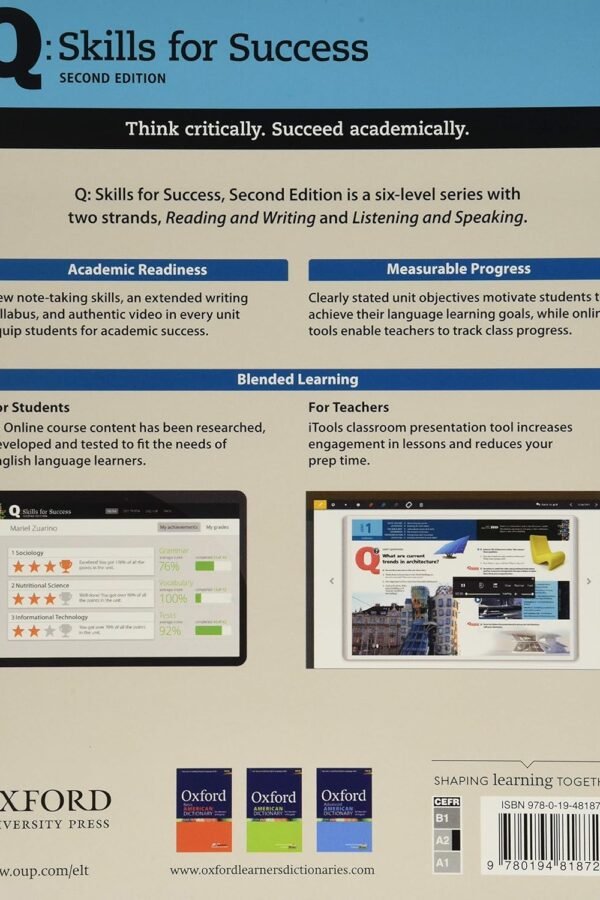The article titled “How Many Jobs Should You Put On A Resume” provides valuable insights into a commonly asked question among job seekers. With the help of LovJobs, an informative platform designed to enhance your job search, individuals can gain clarity on the ideal number of jobs to include on their resume. By addressing this crucial aspect of resume building, aspiring candidates can enhance their chances of attracting the attention of potential employers and recruiters.
Factors to Consider
When it comes to creating a resume, there are several factors to consider in order to present a comprehensive and effective document. These factors include relevance to the job, experience level, job history, and skills and achievements. By taking these factors into account, job seekers can tailor their resumes to highlight their most relevant qualifications and increase their chances of securing an interview.
Relevance to the Job
One of the most important factors to consider when crafting a resume is the relevance of the information presented to the specific job being applied for. Each job posting will have its own set of requirements and desired qualifications, so it’s crucial to carefully review these before preparing the resume. By focusing on relevant skills, experiences, and achievements, job seekers can demonstrate their suitability for the position and capture the attention of hiring managers.
Experience Level
The experience level of a job seeker is another factor that should be taken into consideration. Entry-level candidates may have less work experience to draw upon and should therefore focus on highlighting transferable skills and relevant internships or apprenticeships. Mid-level candidates can expand on their professional experience and demonstrate career progression. Senior-level candidates can showcase extensive experience and highlight leadership positions and accomplishments.
Job History
A candidate’s job history is an important aspect to include in a resume as it provides valuable insights into their professional background. When listing previous roles, the information should be organized in reverse chronological order, starting with the most recent job. By presenting the job history in this way, hiring managers can quickly see the candidate’s most recent experiences and evaluate their career progression. This also allows them to assess the relevance of the candidate’s previous positions to the job being applied for.
Skills and Achievements
In addition to work experience, it’s essential to include a section highlighting the candidate’s skills and achievements. This section allows job seekers to showcase their abilities and accomplishments, regardless of the level of experience. These skills and achievements can be related to specific tasks or projects completed in a previous role, certifications or training obtained, or any other notable accomplishments relevant to the job. By including this information, candidates can provide further evidence of their qualifications and stand out from other applicants.
Tailoring Your Resume
Once the factors mentioned above have been taken into account, it’s crucial to tailor the resume to the specific job being applied for. This involves making careful choices in terms of job relevance and highlighting transferable skills.
Job Relevance
When tailoring a resume, it’s important to focus on the specific job requirements outlined in the job posting. By carefully studying and understanding these requirements, candidates can customize their resume to include the most applicable skills and experiences. This may involve rearranging sections, emphasizing certain accomplishments, or expanding on relevant details from previous roles. By aligning their resume with the job description, candidates can demonstrate their understanding of the position and show how they are uniquely qualified for it.
Highlighting Transferable Skills
Transferable skills are those abilities that can be applied across different industries and job roles. These skills are valuable to showcase because they demonstrate the candidate’s versatility and adaptability. When tailoring a resume, job seekers should identify the transferable skills they possess and emphasize them throughout the document. This may involve providing specific examples of how these skills have been utilized in previous roles or highlighting any relevant training or certifications. By highlighting transferable skills, candidates can show how their experience can be valuable in a new job or industry.

One Page or Multiple Pages?
The decision of whether to have a one-page resume or a multiple-page resume depends on the experience level of the candidate, the type of job being applied for, and industry norms.
Applicant’s Experience Level
For entry-level candidates or those with minimal work experience, a one-page resume is generally sufficient. Since these candidates may not have enough relevant experience to fill multiple pages, it’s important to focus on the most important qualifications and keep the resume concise.
Mid-level candidates with several years of experience may find that a two-page resume allows them to provide more comprehensive information about their qualifications and achievements. This additional space can be used to highlight relevant projects, leadership positions, or other significant accomplishments.
Senior-level candidates, including executives or professionals with extensive experience, may require a resume that spans multiple pages. These candidates often have a wealth of achievements and leadership experience that cannot be adequately summarized in just one page. However, it’s important to remember that even for multi-page resumes, it’s essential to keep the information concise, relevant, and well-organized.
Type of Job
The type of job being applied for can also influence the decision between a one-page or multiple-page resume. Some industries, such as academia or research, may expect candidates to provide more detailed information about their publications, presentations, or research projects. In these cases, a two-page or longer resume may be appropriate to showcase the candidate’s expertise and accomplishments.
On the other hand, certain industries or positions may prioritize brevity and clarity. For example, in fields such as graphic design or marketing, where visual resumes or portfolios are often used, a one-page resume that highlights key skills and achievements may be more effective.
Industry Norms
Lastly, industry norms should be considered when deciding on the length of a resume. Some industries have specific expectations regarding resume length, and deviating from these norms may be seen as unprofessional. Researching industry standards and professional associations can provide insights into what is considered appropriate and expected for a particular field.
Recent Jobs vs. Earlier Jobs
When organizing the job history section of a resume, candidates often wonder how much emphasis should be placed on recent jobs versus earlier positions. There are several considerations to keep in mind when determining the appropriate balance.
Relevance to the Job
The most important factor to consider when determining the emphasis on recent jobs versus earlier positions is the relevance of each role to the job being applied for. Hiring managers are typically most interested in recent experience that directly relates to the position. Therefore, recent jobs that align with the required skills and responsibilities should receive more attention and detail in the resume.
Showing Career Progression
While it’s important to prioritize relevant recent experience, it’s also valuable to showcase career progression. Including earlier jobs in the resume can demonstrate the candidate’s growth and development over time. This is particularly important for mid-level and senior-level candidates. By highlighting their career progression, candidates can showcase their increasing responsibilities, leadership roles, and the evolution of their skills and expertise.

Including Part-Time or Freelance Work
Part-time or freelance work is becoming increasingly common in today’s job market. Including this type of experience in a resume can be beneficial, especially when it contributes to showcasing a diverse skill set or relevant experience.
Job Relevance
When deciding whether to include part-time or freelance work in a resume, it’s important to consider its relevance to the job being applied for. If the work experience is directly related to the desired position or demonstrates transferable skills that are applicable, it should definitely be included. This can be particularly important for entry-level candidates or those looking to change careers, as it allows them to showcase their abilities and experiences even if they do not have a traditional full-time job history.
Showcasing Diverse Experience
Including part-time or freelance work in a resume can also help showcase a candidate’s ability to manage multiple projects or work in different settings. This is particularly relevant for positions that require flexibility, adaptability, or independent work. By highlighting diverse work experiences, candidates can demonstrate their ability to thrive in various environments and handle a range of responsibilities.
Highlighting Relevant Internships or Apprenticeships
Internships or apprenticeships are valuable experiences that can provide job seekers with practical skills and industry knowledge. Including these types of opportunities in a resume can be advantageous, especially for candidates who are transitioning into a new career path or have limited work experience.
Transferable Skills
Internships and apprenticeships often provide candidates with transferable skills that can be valuable in a professional setting. Even if the specific tasks or responsibilities of the internship may not directly match those of the desired job, the skills acquired can still be relevant. When including internships or apprenticeships in a resume, job seekers should focus on highlighting these transferable skills and explaining how they can be applied to the desired position.
Industry Relevance
In addition to transferable skills, the industry relevance of internships or apprenticeships is also crucial to consider. If the desired job is within the same industry or a related field, including relevant internships or apprenticeships can provide valuable context and demonstrate the candidate’s familiarity with the industry. This can be particularly important for entry-level candidates or those looking to break into a specific industry.

Handling Gaps in Employment
Gaps in employment are a common concern for job seekers, and addressing them effectively in a resume is crucial. By focusing on relevant experience during the gap and proactively addressing the gap, candidates can alleviate potential concerns and demonstrate their readiness for the desired position.
Relevant Experience During the Gap
One strategy for handling employment gaps is to focus on any relevant experience or activities that took place during the gap. This can include freelance work, volunteer work, part-time jobs, or relevant training or certifications. By highlighting these experiences, job seekers can demonstrate that they remained engaged in their field or acquired new skills despite the gap in full-time employment.
Addressing the Gap
In some cases, it may be necessary to directly address the employment gap in the resume. This can be done in a brief and concise manner, providing a clear and honest explanation for the gap. For example, if the gap was due to personal reasons, job seekers might explain that they took time off to care for a family member or pursue personal development opportunities. It’s important to strike a balance between addressing the gap and not overly focusing on it, as the emphasis should be on the candidate’s qualifications and suitability for the job.
Number of Jobs for Different Experience Levels
The number of jobs to include on a resume can vary depending on the experience level of the candidate. Here are some guidelines to consider:
Entry-Level Candidates
Entry-level candidates typically have less work experience to include on their resume. In most cases, it is recommended to focus on the most relevant jobs and experiences, even if this means including fewer positions. The emphasis should be on internships, part-time jobs, volunteer work, or any other experiences that demonstrate transferable skills or industry knowledge.
Mid-Level Candidates
Mid-level candidates have more work experience to draw upon, and it’s important to strike a balance between demonstrating breadth and depth of experience. Including the most relevant and recent roles is essential, as well as highlighting any notable accomplishments or career progression. It’s generally recommended to include the past 5-10 years of experience, depending on the relevance and overall length of the resume.
Senior-Level Candidates
Senior-level candidates often have extensive experience, and their resumes can span multiple pages. However, it’s crucial to focus on the most relevant and impactful roles, rather than including every job held throughout their career. Emphasizing leadership positions, major achievements, and distinguished projects can help senior-level candidates stand out and showcase their expertise.
Listing Jobs with Similar Roles and Responsibilities
Including multiple jobs with similar roles and responsibilities can be valuable in demonstrating career progression and the breadth of experience. However, it’s important to present this information in a way that is clear and relevant to the desired position.
Presenting Career Progression
Listing jobs with similar roles and responsibilities can provide a comprehensive picture of the candidate’s career progression. By showcasing increasing levels of responsibility, expanded job scopes, and accomplishments across different roles, candidates can demonstrate their professional growth and the versatility of their skills. This can be particularly important for mid-level and senior-level candidates.
Relevance to the Job
When including multiple jobs with similar roles, it’s important to focus on the relevance of these positions to the desired job. Candidates should highlight the skills, experiences, and achievements gained in these roles that directly align with the job requirements. This ensures that the information presented is targeted and tailored to the needs of the hiring manager, increasing the chances of being selected for an interview.
Additional Tips
In addition to the factors mentioned above, here are some additional tips to consider when creating a resume:
Focus on Quality over Quantity
It’s important to remember that the quality of information included in a resume is more important than the quantity. Hiring managers are typically more interested in specific accomplishments, relevant skills, and experiences that demonstrate suitability for the job. Avoid including unnecessary or irrelevant details that may be a distraction.
Use the Right Formatting
Using the right formatting can make a resume more visually appealing and easier to read. This includes using clear headings and subheadings, bullet points to highlight accomplishments, and consistent formatting throughout the document. Pay attention to font choice, spacing, and margins to ensure a professional and polished appearance.
In conclusion, creating an effective resume requires careful consideration of several factors. By focusing on relevance to the job, experience level, job history, and skills and achievements, job seekers can tailor their resumes to highlight their most relevant qualifications. Whether it’s deciding between a one-page or multiple-page resume, including part-time or freelance work, or addressing gaps in employment, following these guidelines can help job seekers create resumes that stand out and increase their chances of securing an interview.














